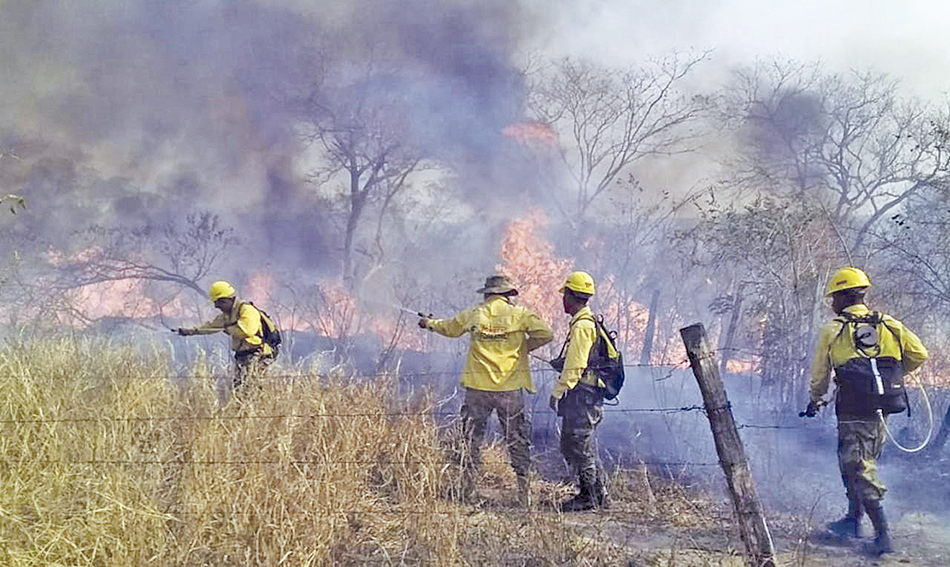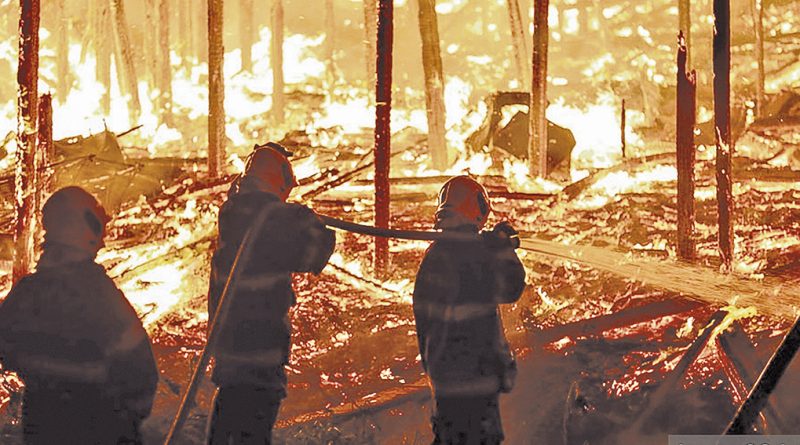Amazon Fires Heat Up Political Crisis in Brazil
By Mario Osava | RÍO DE JANEIRO
August is the month of major political crises in Brazil, but no one suspected that an environmental issue would be the trigger for the storms threatening the government of President Jair Bolsonaro, just eight months into his term.
Protests against the fires sweeping Brazil’s Amazon rainforest are spreading around the world, especially in Europe, and are beginning to be held in Brazil, where they are expected to rage over the weekend in at least 47 cities, according to the Climate Observatory, a coalition of environmental organisations.
“Bolsonaro Out!” is the cry heard in the streets of Barcelona, London, Paris and other European cities, and in Brazilian ones as well.
The increased use of fire to clear land for agriculture, since July, seems to be a reaction to the insistence with which the president and his Environment Minister Ricardo Salles have insulted the environmental movement and dismantled the system of environmental protection, reviving the appetite of landholders, especially cattle ranchers, for clearing land.
The international press has widely condemned the government’s anti-environmentalist attitudes, as have several world leaders, making Brazil the new climate change villain.
“The crisis became political because of the response by Bolsonaro, who, instead of announcing measures to address the problem, decided to politicise it,” Adriana Ramos, public policy advisor for the Social-Environmental Institute (ISA), told IPS.
The first reaction by the far-right president was to blame the forest fires on nongovernmental organisations (NGOs), such as ISA – precisely the ones that have worked the hardest to promote environmental policies and laws in this megadiverse country of 201 million people.
Brazil’s Amazon jungle covers 3.3 million square kilometres, accounting for 60 percent of the entire rainforest, which is shared by eight South American countries.

“Bolsonaro does not need NGOs to smear Brazil’s image around the world,” says a communiqué protesting his remarks, signed by 183 Brazilian civil society organisations.
This is “an international crisis,” said French President Emmanuel Macron, who announced that he would address the issue at the Aug. 24-26 summit of the Group of Seven (G7) advanced economies in Biarritz, in southern France.
Both France and Ireland have made it clear that they will not ratify the free trade agreement between the European Union and the Southern Common Market (Mercosur – Argentina, Brazil, Paraguay and Uruguay) if the Brazilian government continues to violate its environmental and climate commitments.
Comparative table on fires with respect to the same period in 2018, with a cumulative increase this year of 87 percent until Aug. 19 August and 205 percent between Jul. 15 and Aug. 19. Credit: Courtesy of the Life Science Institute.
The exponential increase in the use of fire to clear land is a reflection of the expanding deforestation, according to the non-governmental Amazon Environmental Research Institute (Ipam).
This year, as of Aug. 14, the number of fires rose to 32,728, 60 percent more than the average for the past three years. Drought, a common factor in this destruction, does not explain the fires on this occasion, as the current dry season is less severe than in previous years.
In central-western Mato Grosso, Brazil’s largest soybean-producing state, there were 7,765 fires, compared to just over 4,500 in the previous two years, when there were strong droughts.
Colniza, the most affected municipality in Mato Grosso, is an example of the expansion of the agricultural frontier.
Vinicius Silgueiro, geotechnology coordinator at the local Life Centre Institute (ICV), told IPS that the fires were set both to “clean up” the area deforested in previous months and to “weaken” the primary forests for subsequent deforestation.
The effects are not limited to the Amazon jungle. Clouds of smoke darkened the skies over São Paulo on the afternoon of Aug. 19 and burn particles were identified in local rain, about 2,000 kilometres from the probable sources: Santa Cruz de la Sierra in Bolivia, or the Brazilian states of Mato Grosso in the southwest and Rondônia in the northwest.
São Paulo, a metropolis of more than 22 million people, has been suffering from this kind of air pollution for more than a decade, due to the burning of extensive sugarcane fields in nearby municipalities in the interior of the southeastern state.
But the ban on the use of fire in the harvesting of sugarcane and its mechanisation eliminated that factor of respiratory illnesses, which has now reemerged as a result of the fires in the distant rainforest. (IPS)


Debe estar conectado para enviar un comentario.